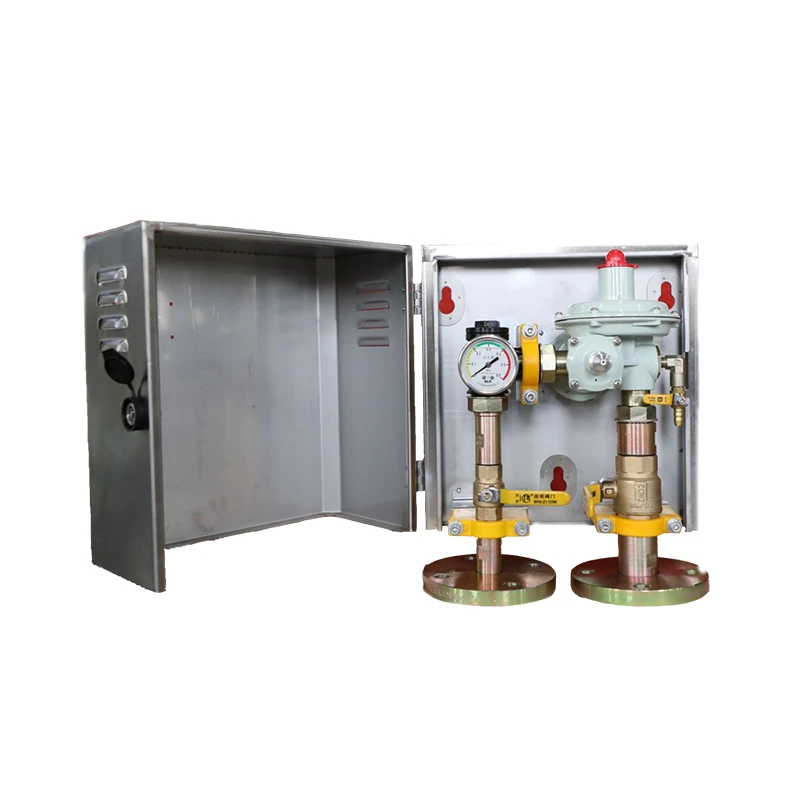
Nov . 08, 2024 02:01
Back to list
Natural Gas Pressure Reduction Device for Efficient Distribution Systems
Understanding Natural Gas Pressure Regulators
Natural gas is a vital energy source that powers homes, industries, and vehicles around the globe. To ensure its safe and efficient distribution, natural gas must be maintained at appropriate pressure levels throughout its journey from the production site to the end-user. This is where natural gas pressure regulators come into play. These devices are crucial for controlling and reducing the pressure of natural gas, ensuring that it arrives safely and at the right pressure for consumption.
The Role of Pressure Regulators
Natural gas travels through pipelines at high pressures. When it reaches a residential or commercial facility, it needs to be decreased to a pressure that can be safely used for appliances such as stoves, heaters, and water heaters. A natural gas pressure regulator is designed to perform this essential task. It automatically reduces the incoming gas pressure to the desired level and maintains this pressure despite fluctuations in the upstream supply.
How Pressure Regulators Work
Pressure regulators operate based on the principles of fluid dynamics and pressure mechanics. They consist of a spring-loaded diaphragm mechanism that opens or closes the gas flow based on the pressure detected at the outlet side. When the outlet pressure rises above a certain threshold, the diaphragm moves to close the gas flow, preventing excess pressure from reaching the facility. Conversely, if the outlet pressure drops, the diaphragm allows more gas to flow, ensuring a steady supply at the desired pressure.
A typical natural gas pressure regulator will have an inlet and an outlet port. The inlet is connected to the high-pressure gas supply, while the outlet connects to the gas system within the building. Many regulators include a safety shut-off feature that disengages the gas flow in case of a malfunction, preventing potential hazards such as gas leaks or explosions.
.
There are primarily two types of natural gas pressure regulators first-stage regulators and second-stage regulators.
مخفض ضغط الغاز الطبيعي

1. First-Stage Regulators These are usually installed at the gas meter and reduce the gas pressure from the high levels found in the transmission pipeline to a mid-range pressure. They handle larger volume flows and are critical in the primary gas distribution process.
2. Second-Stage Regulators These are typically located closer to the point of use, such as within a home or business. They further reduce the gas pressure to a safe level suitable for appliances. This two-stage regulation ensures that pressure is managed effectively at different points in the gas distribution system.
Importance of Maintenance
Like any mechanical device, natural gas pressure regulators require regular maintenance to ensure they function correctly and safely. Accumulation of dirt, grime, or corrosion can impede their function and lead to dangerous conditions. Regular inspections and replacements of parts as necessary can prevent malfunctions. It is also crucial to ensure that the regulator is appropriately sized for the gas demand of the appliances it serves.
Safety Considerations
Safety is paramount when dealing with natural gas systems. Improperly functioning pressure regulators can lead to dangerous situations such as gas leaks or low pressure in critical appliances, which can affect their performance. Users should be aware of the symptoms of regulator failure, such as fluctuating gas pressure or the smell of gas, and report any issues immediately to a professional.
Also, installing a natural gas regulator requires compliance with local regulations and industry standards to minimize potential risks. Professional installation and regular inspections by qualified technicians are recommended to ensure optimal operation and safety.
Conclusion
Natural gas pressure regulators play an essential role in the safe and efficient use of natural gas. By maintaining the right pressure levels throughout the distribution system, these regulators not only protect users from potential hazards but also ensure that appliances function correctly and efficiently. Understanding the operation, types, and maintenance needs of these devices is crucial for anyone involved in the use or management of natural gas systems. As our reliance on natural gas continues to grow, so too does the importance of these critical components in our energy infrastructure.
Latest news
-
Safety Valve Spring-Loaded Design Overpressure ProtectionNewsJul.25,2025
-
Precision Voltage Regulator AC5 Accuracy Grade PerformanceNewsJul.25,2025
-
Natural Gas Pressure Regulating Skid Industrial Pipeline ApplicationsNewsJul.25,2025
-
Natural Gas Filter Stainless Steel Mesh Element DesignNewsJul.25,2025
-
Gas Pressure Regulator Valve Direct-Acting Spring-Loaded DesignNewsJul.25,2025
-
Decompression Equipment Multi-Stage Heat Exchange System DesignNewsJul.25,2025

